The kitchen is virtually the café and bakery of a home; this is where delicious meals for the entire family are prepared and cooked. It can also be the most hazardous place in the house. This area is often ridden with hot surfaces, boiling liquids and sharp objects such as knives, which can accidentally lead to severe burns and wounds.
Apart from potential accidents, food safety is a major concern. According to the FDA, 48 million people contract food-borne diseases with 128, 000 getting hospitalized and 3, 000 dying every year. These illnesses result from consuming food contaminated by toxic chemicals, microbial pathogens or even radioactive material.
Food allergies are also a major concern, which causes severe symptoms or even resulting in fatalities. For these reasons, it’s extremely important that people ensure kitchen safety and sanitation to keep the risks on the down low. While it’s essential to wash one’s hands and store knives in wooden blocks or drawers, kitchen safety and sanitation entails so much more. The following are some practical strategies that will help homeowners and cooks keep their kitchen clean and safe.
-
Keeping the Kids and Pets Out
Generally, kids and pets have no place in the kitchen. Unless the kids are helping around or learning how to cook, it would be in the best interest of the parents to keep them away from the cooking area. Kids and pets are often a distraction that can cause the cook to lose concentration at the most inopportune time. Besides, kids can easily hurt themselves by, for instance, pulling down hot pots and pans. They can also present a tripping hazard for someone who’s ferrying something hot or heavy around the kitchen.
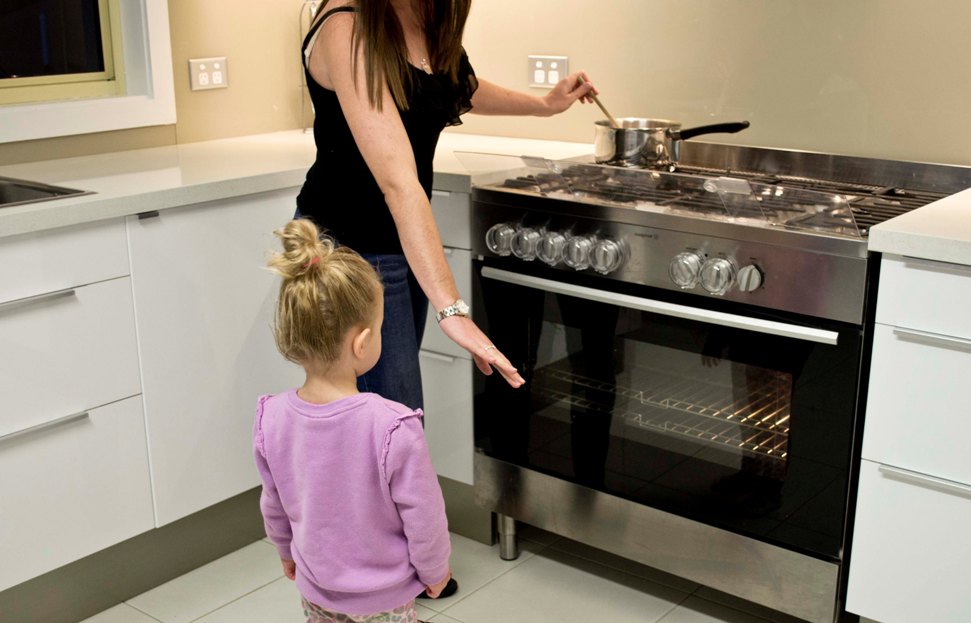
If kids want to learn or help out in the kitchen, the parents should start with recipes that don’t involve a lot of appliances, heating or cutting. It’s also a terrible idea to hold a baby while cooking. Parents should also remember to teach their kids to respect the kitchen. It’s not a place for rough-and-tumble, and the cabinets are not a suitable hiding place.
-
Proper Use of Kitchen Equipment
Kitchens are often peppered with numerous gadgets and appliances, and every cook needs to learn how to operate them appropriately. As such, they should always read the instructions and safety guidelines provided by the manufacturer and adhere to them diligently. Any appliance with a frayed cord should never be used. Also, sharp, small gadgets like graters and can openers shouldn’t be left inside a pool of water lest they cut unsuspecting individuals who dip their hands in there. Appliances should also be allowed to cool down before being washed. More importantly, kitchen equipment shouldn’t be used to fulfill a purpose for which they were not intended.
People also need to be careful when handling food processors and blenders; their blades are very sharp and can cause cuts when one brushes against them. It is also ill-advised to attempt to remove food stuck along the blades using one’s bare hands. Also, the mixer should be unplugged before the beaters are removed or when pulling out stuck food.
-
No Rushing Around the Kitchen
Rushing around the kitchen increases the risks of trip and fall accidents. Also, depending on their level of prowess, cooks ought to cut food slowly and carefully. They also shouldn’t speed between pans and hot cooking pots. Instead, they ought to take a few moments to relax between such chores. Those under the influence of alcohol or medications shouldn’t cook or bake; they actually need to avoid the kitchen altogether. This is because drugs and alcohol typically cause drowsiness and a person under their influence can find themselves in deep trouble.
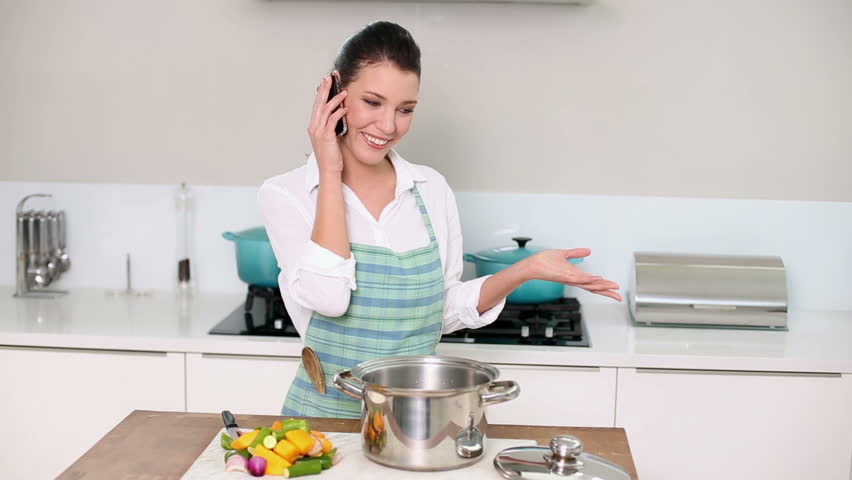
-
Learning how Extinguish Fires
To begin with, there ought to be a fire extinguisher in every kitchen and homeowners should learn how to operate them. People should also gain some critical knowledge regarding the different types of fires. For instance, one shouldn’t use water in a bid to extinguish electrical or grease-related fires. These types of fires ought to be smothered with pot covers, salt or baking soda. In essence, one should focus on denying fire access to oxygen.
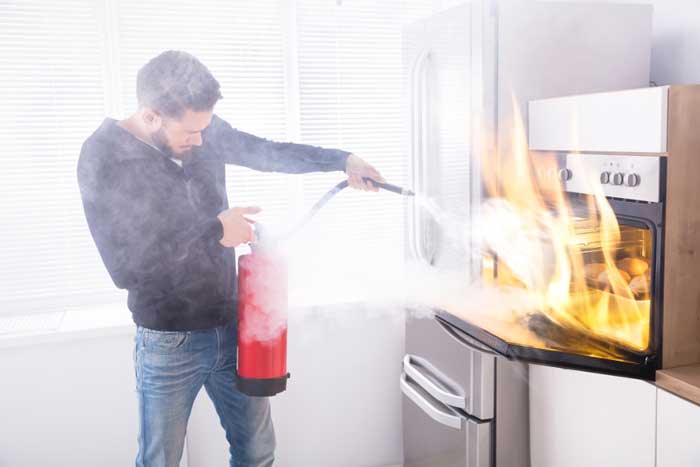
Furthermore, microwave flames are best put off by unplugging the appliance and keeping the door closed. Those that start in the microwave can be turned off using the extinguisher or baking soda. When the fire proves to be stopped within a few seconds, one should consider calling the fire department. Fires spread incredibly quickly and get out of control in a matter of minutes.
For enhanced personal safety, people should learn and teach their children the “STOP, DROP and ROLL” technique, which comes in handy when their clothes catch fire. The importance of teaching kids to respect the kitchen cannot be overstated. They also need to refrain from playing with fire.
-
Don’t Leave Cooking Food Unattended
Homeowners or chefs in the restaurant are urged never to leave cooking or baking food unattended unless they are using a slow cooker. Even then, it’s recommended that parents or cooks place their slow cooker on fireproof spaces like cool stoves. This is because food can quickly go from cooking to burning and ultimately bursting into flames. Also, if there are kids or pets in the house, an adult should always be present in the kitchen at all times.
-
Handling Steam
Steam burns are equally dreadful as those from a hot burner or boiling liquid. When the need arises to open a boiling pot, the cover should not be pushed away but rather, pulled towards the cook. This helps to protect the hands from coming into contact with the steam. It’s also important to be careful around foods cooked in the microwave or packets. These packages should be opened away from the face, and hot pads should be used during the process.
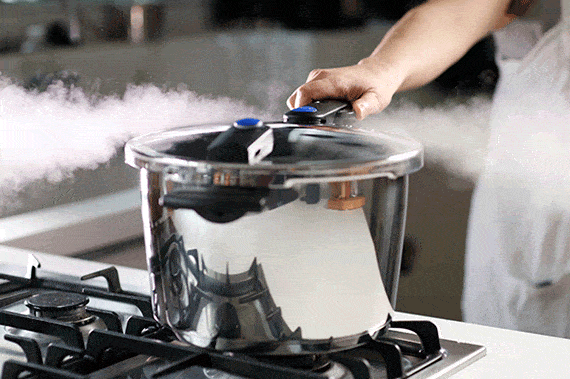
-
Using Hot Pads and Oven Mints
People are required to equip their kitchens with a nice selection of hot pads and oven mitts. These will come in handy when handling hot pots, bowls or pans straight from appliances like microwaves, ovens or stovetop. However, one should avoid using a wet hot pad or oven mint. Such will efficiently transmit heat and can potentially cause mild to severe burns on the hands.
-
Proper Knife Skills
Whether sharp or dull, knives can cut the user. Sharp knives can easily go through the skin while a dull knife requires more force thus it’s more likely to slip and cause an injury. Therefore, it’s important to practice safe cutting habits. The hand holding the knife should have a secure grip on the handle. To ensure that the handle is well held, the thumb and the pointer finger should grasp the sides of the blade as closest to the handle as possible. To avoid accidental cuts, the fingers should be curled in a way that the nails are touching the ingredient. The user’s thumb should be tucked behind the curled fingers.
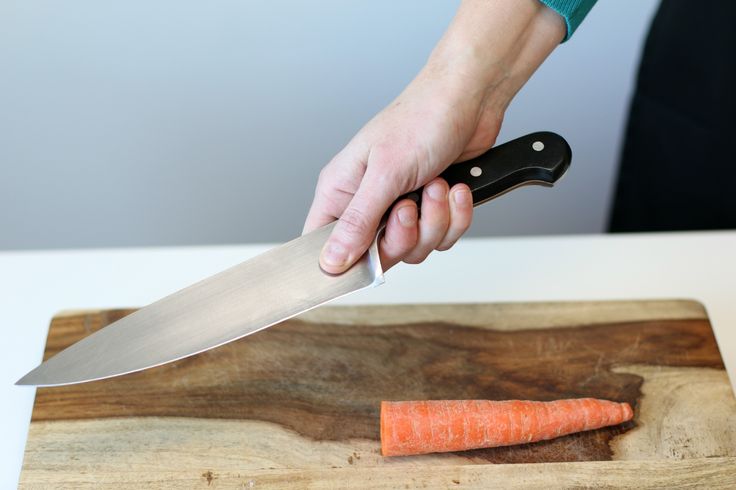
-
Moving Heavy Objects
When maneuvering around the kitchen, there comes a time when someone needs to lift heavy objects. Lifting heavy loads requires without observing some safe techniques could cause a person to sustain back injuries. Some effective lifting and transportation techniques include the following.
- Bending the knees rather than the back
- Taking small steps rather than sprinting when carrying the load
- Changing direction with the feet as opposed to twisting the waist while carrying a heavy load
- Storing heavy items on low cabinets
- Getting help if the items are too heavy.
Storing heavy objects on low cabinets not only prevents unnecessary straining when lifting the item, but it also minimizes the risk of being crashed by the loads.
Kitchen Sanitation
Food poisoning is a major concern for a lot of people, which is especially true for the elderly, infants and individuals whose immune systems are compromised. Food borne illnesses are mostly caused by bacteria or through cross-contamination of food. Bacteria denotes unicellular microorganisms that reproduce when one cell splits into two through a process called binary fission. This process occurs within as little as 20 minutes.
Although they can thrive in diverse conditions, bacterial growth primarily requires optimal temperature, moisture, oxygen, and natural ph. These conditions are easily attainable in the kitchen areas where temperatures are high and plenty of moisture. This is not to mention foods with different acidity levels.
On the other hand, cross-contamination occurs when substances or fluids from different types of foods mix. Cross-contamination can cause accidental allergies. It’s, therefore, imperative for chefs to maintain kitchen sanitation at optimal levels. Moreover, personal hygiene in the kitchen should be maintained optimally. Here are some strategies that will go a long way in rendering the kitchen clean and healthy.
-
Personal Hygiene
When it comes to preparing food in the kitchen, personal hygiene must be upheld. The first thing a person should do is wash their hands thoroughly with hot, soapy water before embarking on food preparation. While at it, they should also ensure to observe proper hand washing techniques as follows:
- Wetting the hands with clean running water
- Lathering the hands by rubbing them together with soap
- Cleaning the back of the hands, between the finger and under the nails
- Scrubbing them for 20 seconds
- Rinsing the hands well with clean running water
- Drying the hands using a clean towel or even air drying them
Also, the hair should always be tied back, and the hands cleaned after touching the mouth, nose, eyes or pet. Also, homeowners should avoid handling food while sick. Cuts, sores, burns, and abrasions should always be covered. It’s also important to shower or take a bath on a daily basis. This is because the human body can act like a host on which disease-causing parasites and germs thrive and reproduce. Prime areas include the skin, hair and around the body openings.
-
Cleaning Contact Surfaces and Utensils
Appropriate cleaning of all the utensils and contact surfaces in the kitchen goes a long way in preventing the spread of diseases. Food remains often get trapped in the kitchen’s nooks and crannies including fork tines and counter cracks. This can facilitate the spread of harmful organisms such as bacteria and food viruses.
Also, dirty utensils and soiled surfaces can attract disease-spreading pests such as flies, cockroaches, and mice, which are notoriously known to contaminate the food, cooking equipment, and kitchen surfaces. As such, these places should be thoroughly cleaned with plenty of water and subsequently sanitized. Utensils should be cleaned with hot soapy water, and one should always begin with glassware, dishes, and pots.
However, it should be noted that bacteria among other microorganisms are not solely responsible for causing food contamination. Preparing different foods on the same surface simultaneously can potentially cause microbial transfer and cross contamination. For instance, cutting raw chicken on the same surface as the lettuce is potentially hazardous. Therefore, if the initial task was accomplished on a chopping board, the cook ought to clean its surface with hot soapy water thoroughly before moving to the next ingredient. This is important because cross-contamination can also cause allergic reactions.
-
Sanitizing Equipment
Cleaning and sanitizing denote two different activities that are equally important. When it comes to cleaning, a person is only required to remove visible food particles and rinse the utensils and appliances appropriately. Sanitizing, on the other hand, is accomplished after washing and is meant to discourage the growth of microorganisms on both kitchen equipment and contact surfaces. Some people use chlorine or QUAT based sanitizers, while others prefer organic disinfectants like white distilled vinegar.
Kitchen equipment such as fillers and slicers are often difficult to clean. This is especially true when food particles such as meat become stuck in a complicated position, at which point the tool becomes a hotbed for bacterial growth. Such equipment needs to effectively taken apart to the furthest extent and subsequently thoroughly cleaned and sanitized. However, manufacturer’s instructions must be followed. Ideally, taking appliances apart and sanitizing them can be done on a daily basis but people should distinguish between what’s practical and what’s worthwhile.
-
Observing Cutting Board Sanitation
Wood cutting boards are visually appealing, but unfortunately, they are not porous. This, however, doesn’t mean that they can’t be used safely. It merely means that they are a bit difficult to keep clean and sterilize. People who prefer using these boards need to allow them time to dry off before using them again. This is because their porousness enables them to trap fluids that can facilitate the growth of bacteria. A homeowner may, otherwise, opt for plastic, marble, or glass cutting boards. However, regardless of the nature of the board being used, it’s prudent to maintain the highest level of hygiene.
Also, raw meat ought to be prepared on a board that is specifically designated for that particular purpose. Separate cutting board from the one being utilized to cut bread products should be used to prepare fresh vegetables and fruits. Also, the towel that’s used to wipe the board should be washed often.
-
Practicing Safe Storage
To prevent the invasion of harmful microorganisms like bacteria, it’s imperative to store food at the correct temperature and for the right period. These microbes are more likely to develop in storage areas where the temperature ranges between 41 and 135 degrees Fahrenheit. Cooks should, therefore, utilize food thermometers to ensure that their foodstuff is stored at the correct internal temperature. This is particularly necessary for beef and poultry that especially those cooked in advance. Also, it is critical to prevent cross-contamination. A common mistake made by most cooks is leaving thawing meat on a top shelf from which it drips onto other foods. It is also a bad idea to place food on the ice that will be later used to freeze beverages.
-
Chemical Storage
While cleaning chemicals are important in the kitchen, they can be extremely dangerous if mishandled. Bleaches, acids, and drain cleaners, for instance, can cause explosions or emit toxic gases if mixed. These chemicals should be used strictly according to the guidelines provided by the manufacturer. Chemicals should be stored in well labeled and properly sealed containers; preferably the original one. Additionally, information on labels should be read and understood before any chemicals are used.
Also, volatile like gasoline, kerosene and cleaning fluids like chlorine bleaches or ammonia are often flammable. This means that they can easily explode or cause fires and, as such, they should never be mixed or stored in the kitchen. Also, pesticides like roach poison, rodent bait or bug killers should be considered potentially hazardous. When being used, gloves should be used and all foods covered. If they get to the hands, soapy water should be used to wash them off. Also, they should be stored out of kids or pets reach and preferably someplace else rather than the kitchen. If any chemicals come into contact with the skin or are ingested, poison control should be contacted.
-
Preventing Slip and Fall Accidents
Grease, oils and soapy water are commonly used in the kitchen, which can cause slip and fall injuries. To keep these risks on the minimum, all spills should be wiped off immediately. Ideally, those working in the kitchen should always keep a mop nearby. Often, people tend to move fast when working in the kitchen. Therefore, boxes, bags, and chairs among other objects should never be left lying around on the floor.
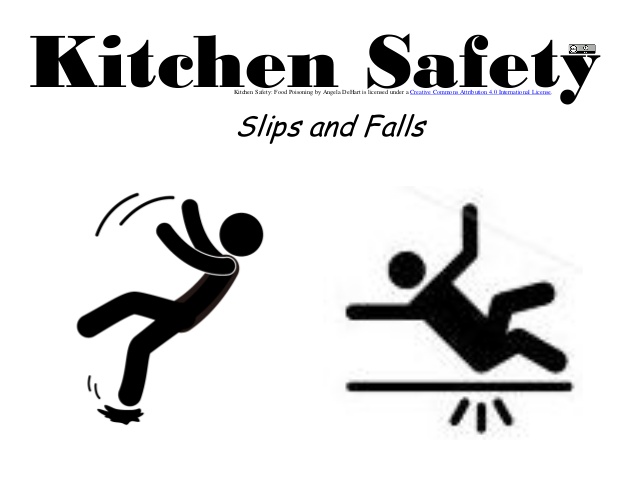
-
Water and Electricity Shouldn’t Mix
Electricity can be extremely dangerous; it can cause electrocution or house fires. Homeowners or restaurant managers should always ensure that all electrical cords are flawless devoid of exposed wires. Any damage on the cord should be repaired immediately lest they cause a fire or even electrocute someone. Appliances such as electrical jugs or kettle should be unplugged from the power source when being filled with water. Also, these appliances shouldn’t be used near water outlets such as sinks lest they cause electrocution.
Ideally, if there is a need to have an electrical outlet near the sink, a Ground Fault Interrupter type of socket should be used. In the case of electrocution, the victim shouldn’t be touched if they are still in contact with the electrical current. The electric flow ought to be interrupted from the main switch.
If the electrocuted person doesn’t cough, breath or move, CPR should be performed. It’s also important to protect the victim from becoming chilled. Additionally, all the burned areas should be covered with a sterile gauze bandage. More importantly, one should call 911 or the local emergency number immediately after the accident.
Maintaining a clean and sterile kitchen is critical in preventing food borne diseases. Dangerous microorganisms like bacteria can grow rapidly in unsanitary kitchen surfaces and consequently contaminate the food. Just because a kitchen doesn’t look greasy or filthy doesn’t mean that it’s hygienic. Homeowners and restaurant staff should, therefore, make a point of sanitizing all contact surfaces, appliances, and utensils.
Safety should also be upheld and children prevented from playing in the kitchen. Additionally, people should take precautions when handling the various kitchen appliances and ensure to follow manufacturers’ instructions to the letter. People should also take care when handling and storing chemicals owing to the toxicity of these substances, which is potentially fatal.
